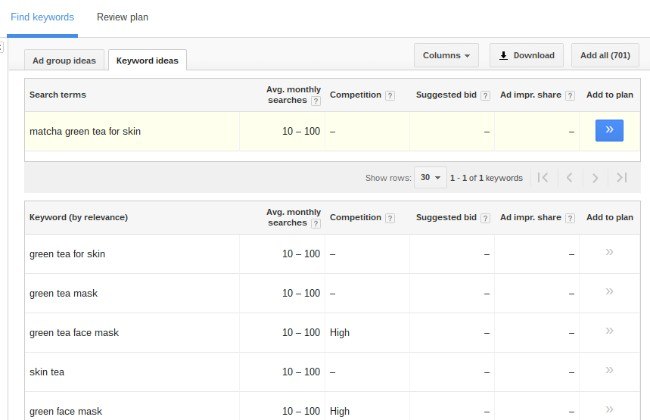Sometimes a niche falls into your lap. Other times you have to search long and hard for it.
Inventors don't have this problem as much since they're creating items that generally have no market to begin with, or the product is so unique that they don't have to think about discovering a profitable niche.
But if you're not creating a completely new item, how do you go about finding the products to sell in your store? That's a tall task considering the number of products you can find online. Heck, just look at Amazon and you'll find anything from cars to musical instruments.
However, you're not trying to compete with the big dogs. The goal with a less original online store is to decide on a niche that's unique enough to grab a part of the market, while also popular enough so that there are enough people to buy from you.
Additionally, your niche ecommerce website needs something to help it stand out, like an authority blog, informative newsletter or a forum that brings people of the same mindset together online.
So, whether you're finding a niche for a dropshipping site or a regular old ecommerce store, keep reading to follow the steps on finding a niche for your ecommerce shop.
Step 1: Follow Your Passion (Sort Of)
Mark Cuban once talked about how it's silly to follow your passion. Rather, he argues that you're better off selecting a niche or idea that's going to make money and turn that into your passion. For example, you may not have any interest in antique furniture, but if you can make money off of it you might learn that it's a rather interesting area.
But…if you already have a passion and it's profitable, or there's a market for more businesses in that area, that's quite the bonus as well.
Therefore, my first piece of advice is to make a list of everything you're passionate about. I'm talking everything from reading to sports and knitting to cooking. Narrow each passion down to something more unique, like cooking, but cooking for post-grads who don't have much time on their hands.
This list of passions will go on your list of niches you know are profitable (but you may not currently be enthused about). This way you can put them through the tests to see if they have any marketability.
Step 2: Formulate Your List of Potential Products
Your initial list is going to have some duds, but that's the whole point. You're trying to investigate to see the potential for all of them. Take your passions from before to start this list off. Now, include several other niches that you think would sell well.
For example, my mock list looks like this:
- Cooking for young professionals
- Urban gardening
- Books
- Mobile technology
- Smoking alternatives
- Fashion
- Tea
Some of them I have a passion for, others I don't at all. The problem with this list is that they're more general categories or topics. The next step is to narrow it down to individual products, allowing you to focus on a single product that contains multiple items to sell. For example:
- Crock pots (great for young professionals)
- Small composters (great for urban gardening)
- Military-themed books (books)
- Wireless headphones and phone cases (mobile tech)
- Vaping (smoking alternatives)
- Yoga pants (fashion)
- Matcha green tea (tea)
Step 3: Comparing Which Products Are Trending and Popular
Go to Google Trends to evaluate which of your products are trending upwards. You can only compare five keywords at a time, but that's okay.

During my search I realized that slow cookers (crock pots) have far more interest than any other product. However, removing crock pot from the mix shows that some other options are trending, but on a smaller scale.

Since slow cookers stood out so much, I want to see it on its own in Google Trends. Therefore, I removed everything except that. The trends aren't that consistent, but it's clear slower cookers are selling. It has steady peaks and valleys making me think that it's an established market where people may buy at certain points, but not all of the time.

Complete the individual test for each product.
After my research I really liked the way matcha green tea was looking. The trend has been going upwards, and we know that matcha is a smaller category of the tea market. Not only that but matcha can be used as an ingredient in a wide range of other recipes, making it ripe for content creation.

Therefore, I'm going to opt for matcha green tea right now.
Step 4: Honing in on a Real Niche
Matcha green tea might sound like a solid niche, but we can do better. Opening up a store that only focuses on the tea is most likely going to cause trouble since the market is already fairly competitive.
Therefore, we want to figure out a way to sell matcha green tea for a set group of people, or a target market. This way you can construct your blog and overall strategy around that, drawing people who identify as your target market.
This involves a Google search.
I like typing in the product + the word “for,” allowing you to see what others are using the product for.
As an example, matcha green tea + “for” provides the following suggestions:
- Matcha green tea for weight loss
- Matcha green tea for skin
- Matcha green tea for sale
- Matcha green tea for acne

We can eliminate the “sale” suggestion, but weight loss, skin and acne are all rather interesting.
Finding Keywords to Establish Demand
Just because Google suggested some keywords doesn't mean lots of people are searching for those keywords. Therefore, we can use the Google Keyword Planner to see if internet users are actually searching for these.
Go to Google Keyword Planner.
Search for the new keywords we talked about above.

When searching for the keywords I found that not many people are searching for matcha for skin or any of the other options. Therefore, I would consider jumping back to some of the other many niches I established before. However, you shouldn't be completely discouraged about the matcha results, because it might just be that you're a little ahead of curve when it comes to the matcha market. In fact, some might argue that these low search results are the perfect niche, and that being ahead of everyone else is better.
Conclusion
Overall, these are the best tools at your disposal for finding a niche for your ecommerce shop. You can immediately see what people are searching for and make valuable decisions to either skip a niche or go with it.
If you have any questions about this article, let us know in the comments section below.







Hi Joe,
Thanks a lot for your article.
Focusing on your Matcha niche, as it is something that you eat, then how do you proceed ? You create your own brand importing Matcha from Japan ?
I just want to understand how to deal and create shops with products that you can eat 🙂
Thanks,
Max